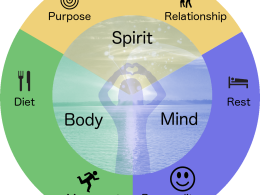Introduction: Dealing with muscle aches and pains can be a frustrating experience that affects your daily life and overall well-being. Fortunately, there are various effective techniques and strategies you can employ to alleviate muscle discomfort and promote recovery. In this comprehensive guide, we will explore a range of approaches that can help you find relief from muscle aches and pains.
- Understand the Causes: To effectively address muscle aches and pains, it’s crucial to understand their underlying causes. Muscle soreness can result from intense physical activity, overuse, muscle strains, injuries, poor posture, stress, or medical conditions. Identifying the root cause will guide you in selecting the most appropriate remedies.
- Rest and Recovery: Giving your muscles sufficient time to rest and recover is paramount in alleviating muscle aches and pains. Avoid activities that aggravate the pain and provide your body with the opportunity to heal naturally. Adequate rest allows for tissue repair and reduces inflammation.
- Apply Heat and Cold Therapy: Both heat and cold therapies can be valuable in reducing muscle pain. Cold therapy, such as ice packs or cold compresses, helps reduce inflammation, numbs the area, and relieves acute pain. Heat therapy, on the other hand, improves blood circulation, relaxes muscles, and alleviates stiffness. Experiment with both methods to determine which one works best for you.
- Stretching and Gentle Exercise: Engaging in stretching exercises and gentle physical activity can help alleviate muscle aches and pains. Stretching improves flexibility, increases blood flow, and promotes muscle relaxation. Incorporate dynamic and static stretches targeting the affected muscle groups. Additionally, low-impact exercises like swimming or cycling can provide relief and promote healing.
- Practice Good Posture and Ergonomics: Maintaining proper posture and ergonomics can significantly reduce muscle strain and alleviate aches and pains. Whether sitting, standing, or lifting objects, be mindful of your posture. Sit with your back supported, keep your shoulders relaxed, and avoid prolonged periods of static positions. Adjust your workspace ergonomically to minimize muscle stress.
- Use Topical Pain Relief: Topical analgesics, such as creams, gels, or patches, can provide localized relief from muscle aches and pains. Look for products containing ingredients like menthol, camphor, or capsaicin, as they can help soothe the affected area. Follow the instructions and apply as directed.
- Get Regular Massages: Massages can be highly beneficial in relieving muscle aches and pains. Professional massages help improve blood circulation, release muscle tension, and promote relaxation. If possible, seek a qualified massage therapist who specializes in treating muscle pain. Alternatively, self-massage using foam rollers or massage balls can also be effective.
- Maintain a Balanced Diet: A balanced diet rich in essential nutrients supports overall muscle health and aids in recovery. Include foods high in antioxidants, vitamins (especially vitamin C and D), minerals (such as magnesium and potassium), and protein. These nutrients play a vital role in muscle repair and reducing inflammation.
- Stay Hydrated: Proper hydration is essential for muscle health and recovery. Drink an adequate amount of water throughout the day to prevent dehydration, which can exacerbate muscle aches and pains. Hydration helps flush out toxins, supports optimal muscle function, and aids in the delivery of nutrients.
- Seek Professional Help: If your muscle aches and pains persist or worsen despite home remedies, it’s advisable to seek professional help. A healthcare provider or physical therapist can assess your condition, provide accurate diagnosis, and recommend appropriate treatment options tailored to your specific needs.
Conclusion: Muscle aches and pains can significantly impact your quality of life, but with the right approach, relief is within reach. By understanding the causes, resting and recovering adequately, using heat and cold therapy, incorporating stretching and gentle exercise, practicing good posture, using topical pain relief, getting regular massages, maintaining a balanced diet, staying hydrated, and seeking professional help when necessary, you can effectively alleviate muscle aches and pains. Remember, every individual is unique, so experiment with different strategies to find the ones that work best for you.










